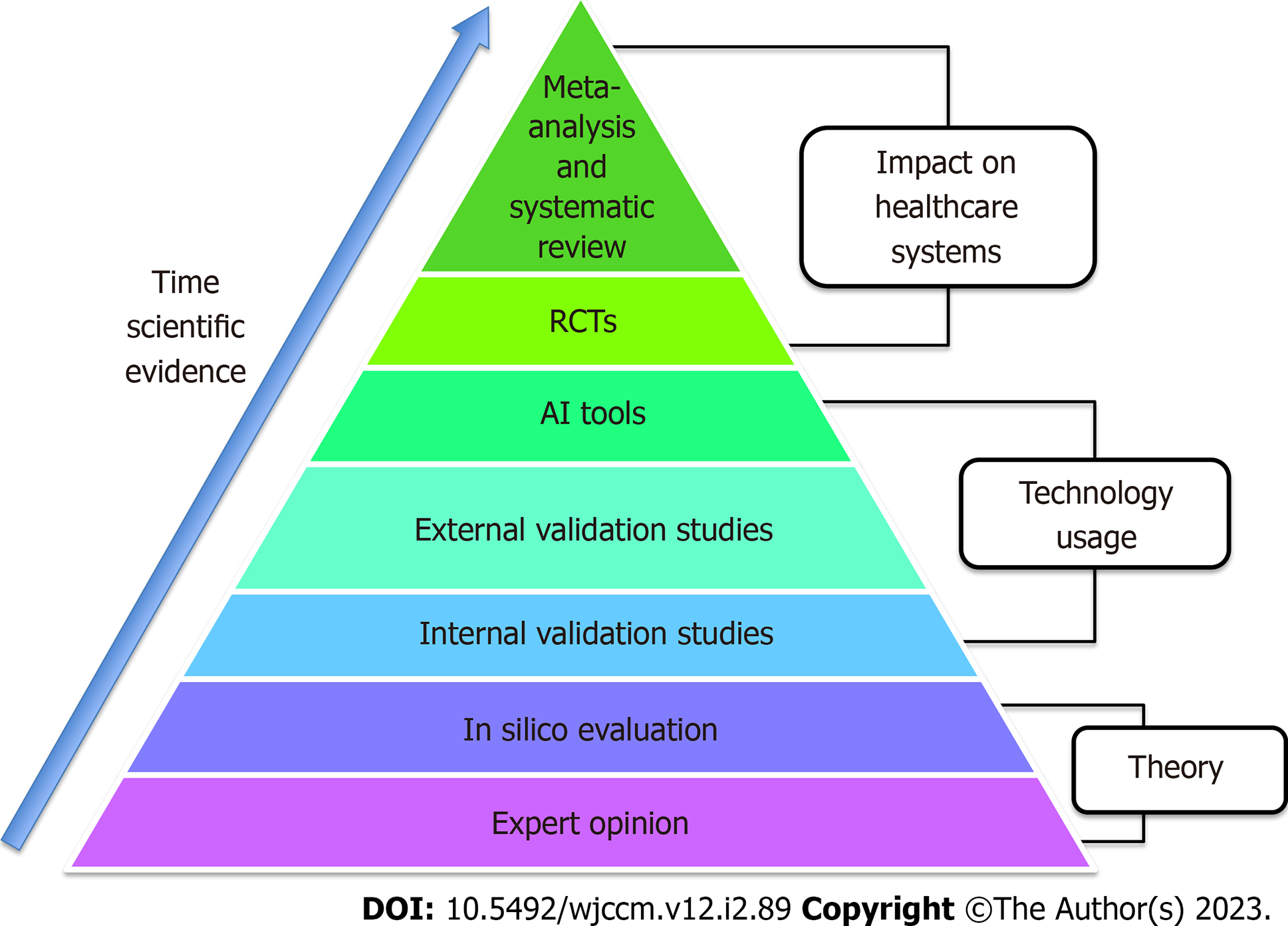Copyright
©The Author(s) 2023.
World J Crit Care Med. Mar 9, 2023; 12(2): 89-91
Published online Mar 9, 2023. doi: 10.5492/wjccm.v12.i2.89
Published online Mar 9, 2023. doi: 10.5492/wjccm.v12.i2.89
Figure 1 A pyramid for artificial intelligence scientific evidence is proposed.
Starting from the bottom and moving to the top, emerging results are becoming increasingly solid and strong. The two lowest rungs are the theory followed by the third, fourth and fifth steps that represent studies analyzing the use of artificial intelligence (AI) in clinical practice. From creation of the model with internal validation, we move towards external validation studies and the creation of usable real instruments (AI tools). The penultimate step [randomized controlled trials (RCTs)] and the tip of the pyramid (meta-analysis and systematic reviews) represent the strongest methodological analysis to reach conclusions on the real impact of this technology on healthcare systems. If we then imagine the support base of the pyramid we have the necessary tools for each step of clinical research in AI applied to the intensive care unit: Electronic health record, solid big data systems, internet of things technologies and models of eXplainable AI.
- Citation: Bellini V, Coccolini F, Forfori F, Bignami E. The artificial intelligence evidence-based medicine pyramid. World J Crit Care Med 2023; 12(2): 89-91
- URL: https://www.wjgnet.com/2220-3141/full/v12/i2/89.htm
- DOI: https://dx.doi.org/10.5492/wjccm.v12.i2.89









